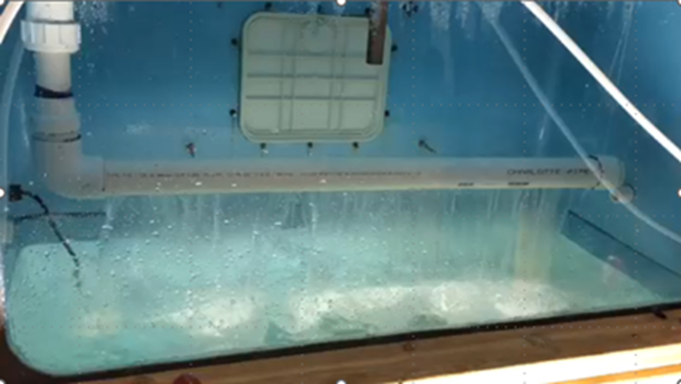Identification of the ice-nucleating agents in sea spray aerosol by microspectroscopic analysis
Submitter
Knopf, Daniel — Stony Brook University
Area of research
Aerosol Processes
Journal Reference
Science
Over the oceans, breaking waves and wind over the sea surface can loft sea spray aerosols (SSA) high enough into the atmosphere to reach clouds where they can form ice and play a role in modulating the Earth's radiation and water balances. Using X-ray microscopy, we demonstrate that SSA particles that form ice crystals under typical atmospheric conditions contain metabolic products released into surface ocean waters by planktonic microorganisms
Impact
Laboratory ice formation experiments quantified the conditions in the atmosphere for which ice crystals form on SSA particles and from liquid SSA droplets. These results and data from other studies were used to develop a freezing model to describe these two ice formation pathways when temperature, humidity, and SSA particle numbers are known. This freezing model predicts the particles that form ice and can be readily implemented in cloud-resolving and climate models. As SSA is one of the most abundant types of airborne particles, our data and freezing model are critical for how clouds are represented in global climate models to improve our understanding of the role of clouds in climate sensitivity.
Summary
Sea spray aerosol (SSA) is a widely recognized important source of ice-nucleating particles (INPs) in the atmosphere. However, the ice-nucleating agent in SSA particles that initiates ice nucleation and corresponding freezing rates have not been well constrained. Characterization of ambient and laboratory-generated SSA for their composition using scanning transmission X-ray microscopy coupled with near-edge X-ray absorption fine structure spectroscopy confirms that water-borne exudates, i.e., metabolic species released by planktonic microorganisms, composed of proteins and polysaccharides act as ice-nucleating agents (INAs). These data and data from previously published laboratory studies are used to develop the stochastic freezing model (SFM) producing ice nucleation rate coefficients for SSA-INPs. This model simultaneously predicts the immersion freezing and deposition ice nucleation pathways by SSA particles under tropospheric conditions. The predicted INP concentrations agree with ambient and laboratory measurements. Because this holistic freezing model is independent of the source and exact composition of the SSA particles, it is well suited for incorporation into cloud-resolving and climate models to assess the impact of SSA-INPs on the radiative properties of clouds.


